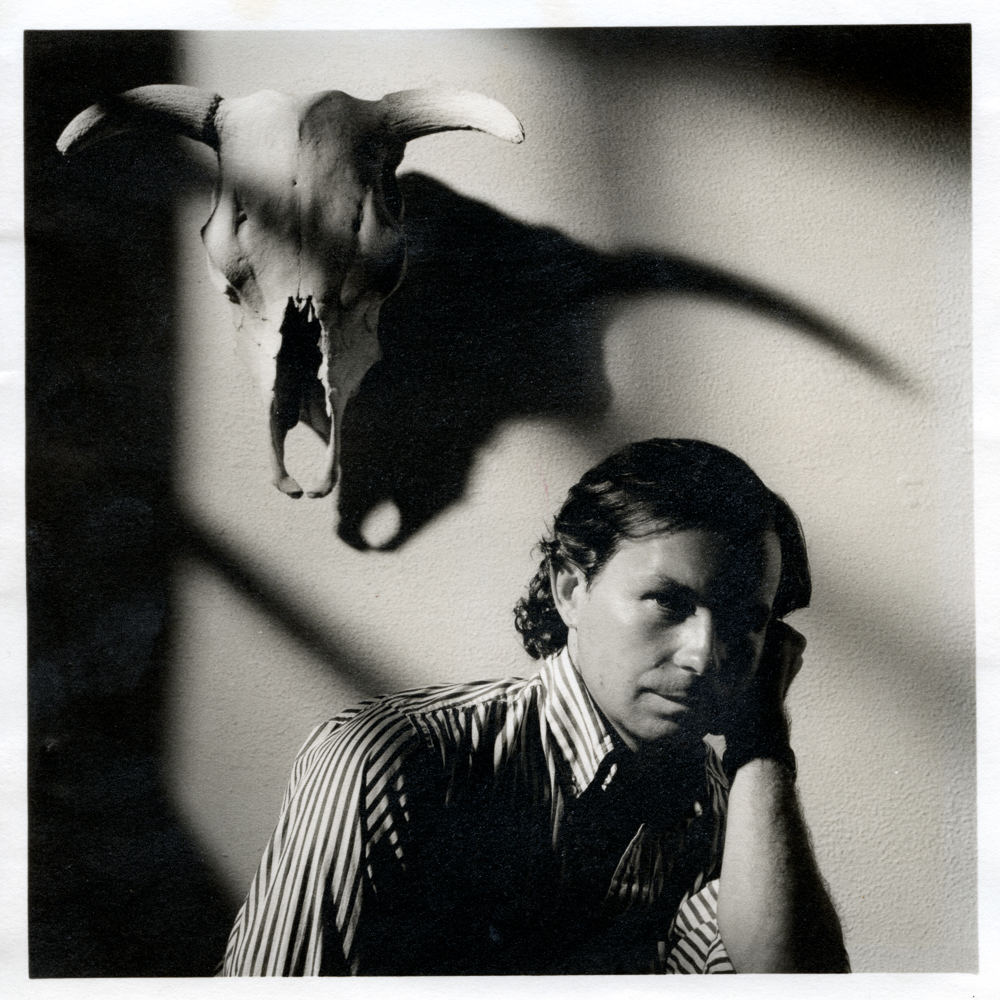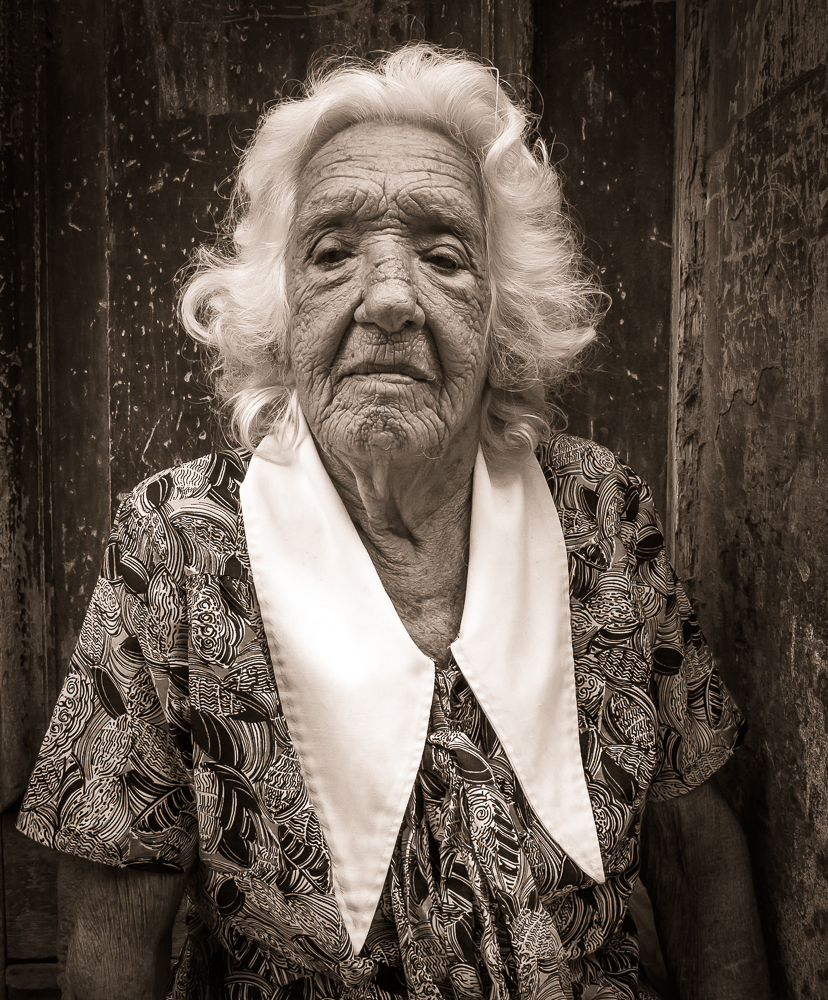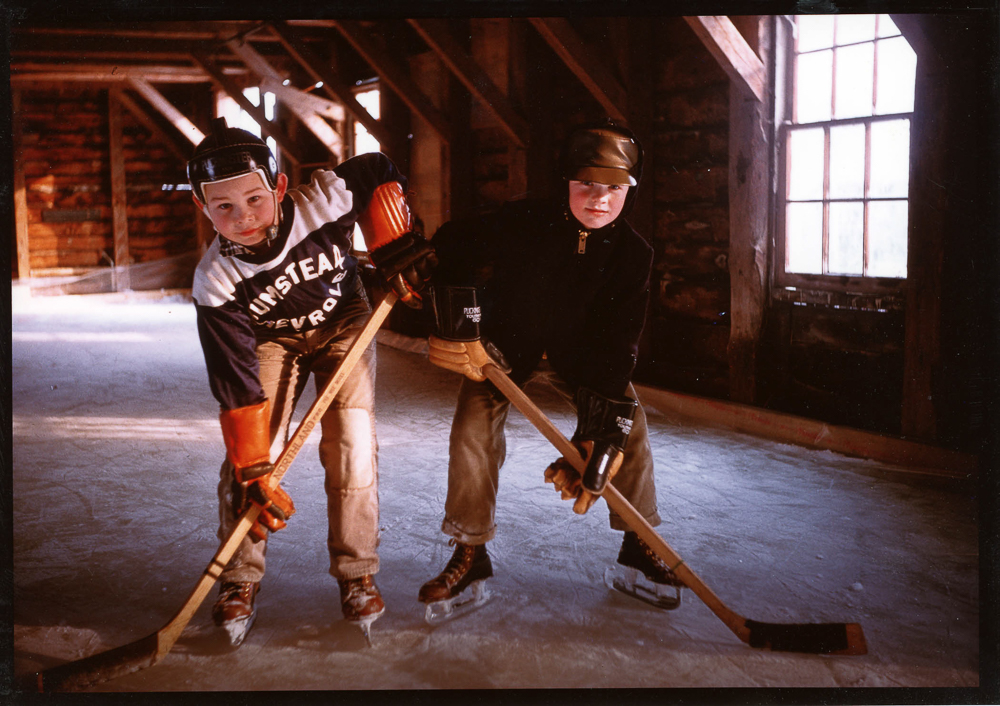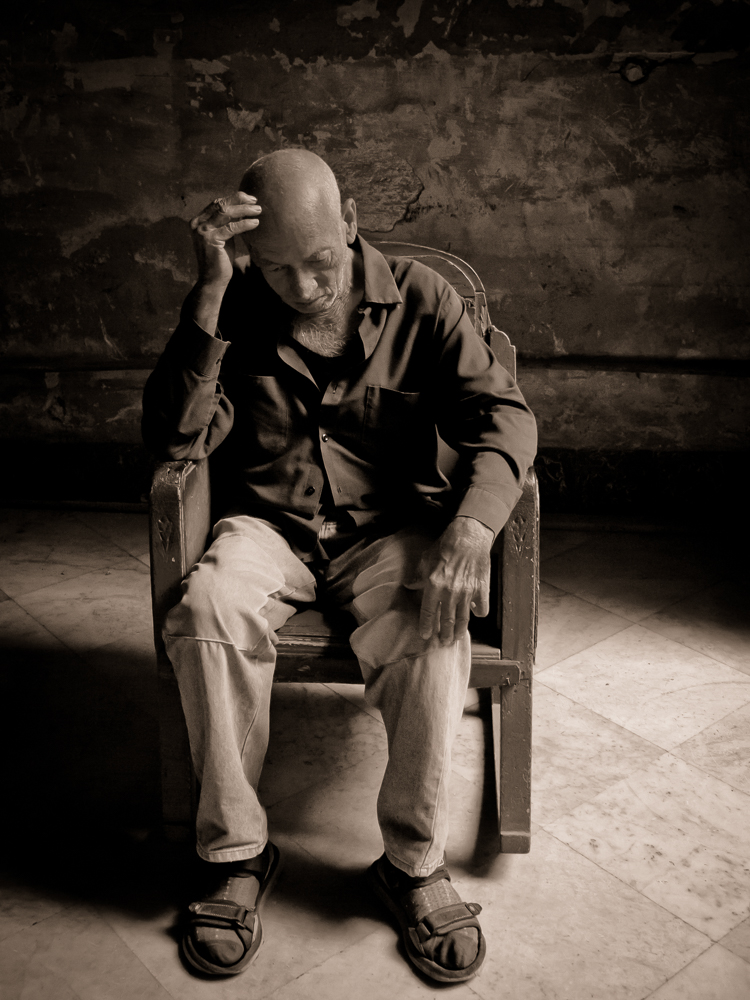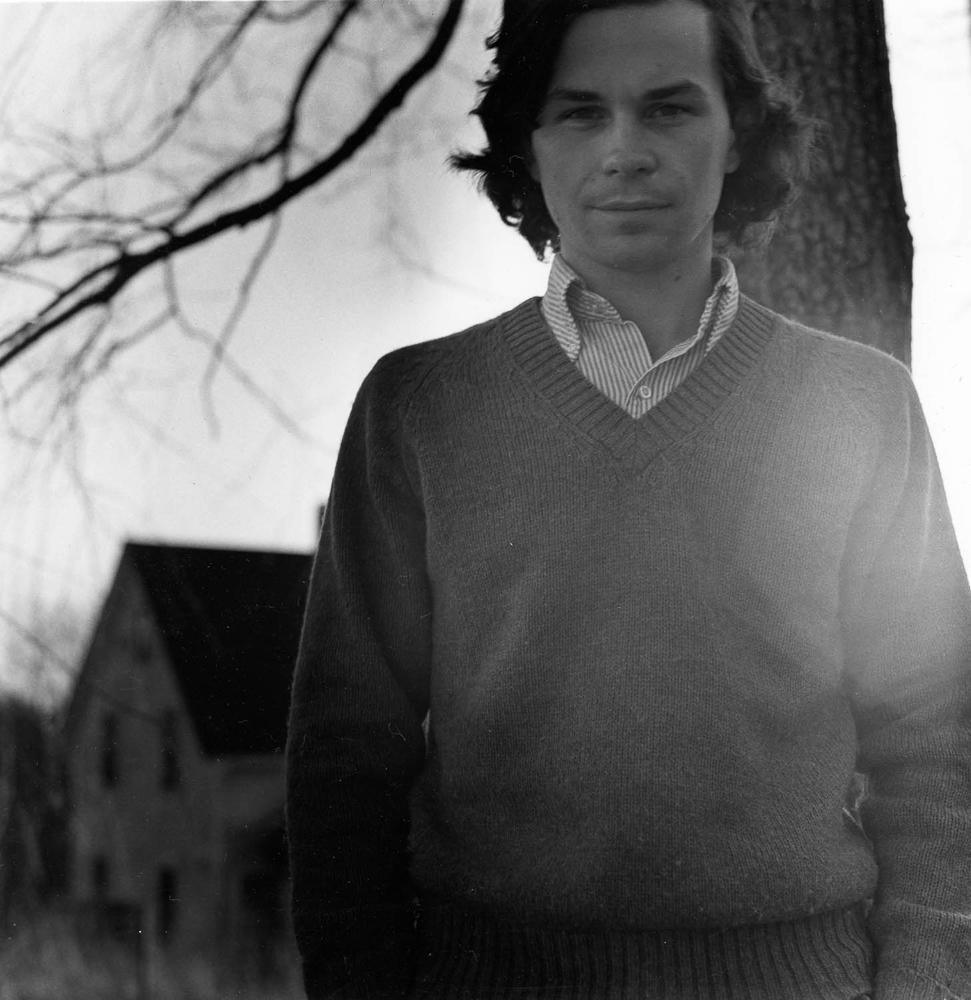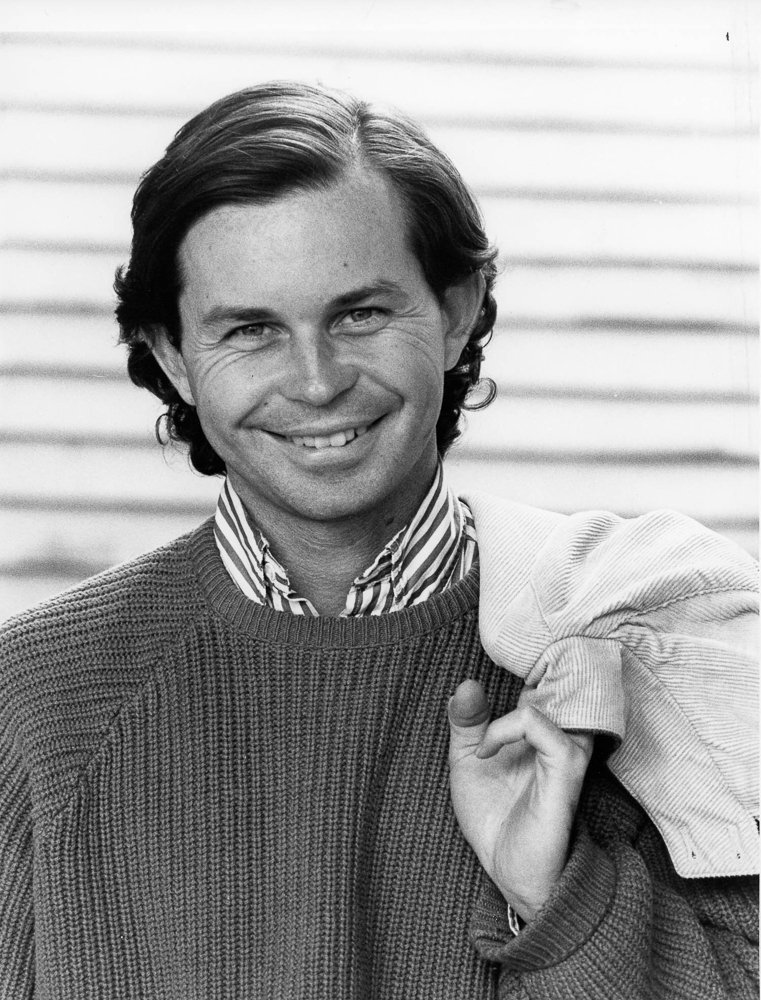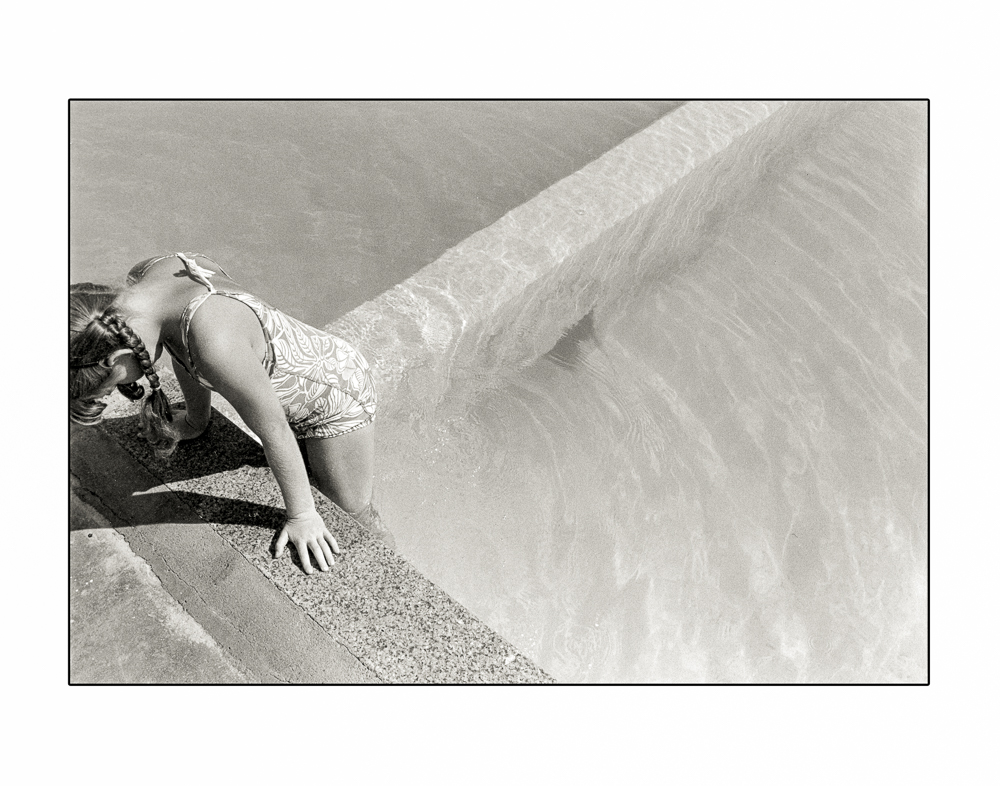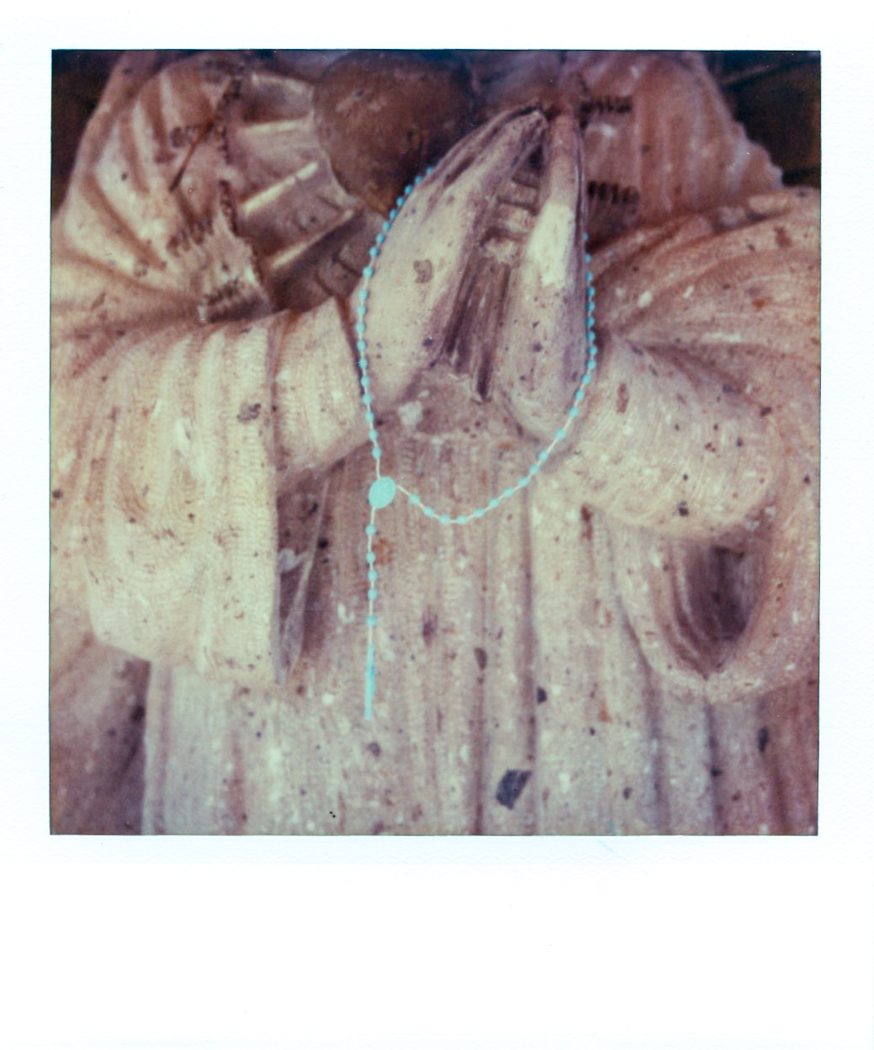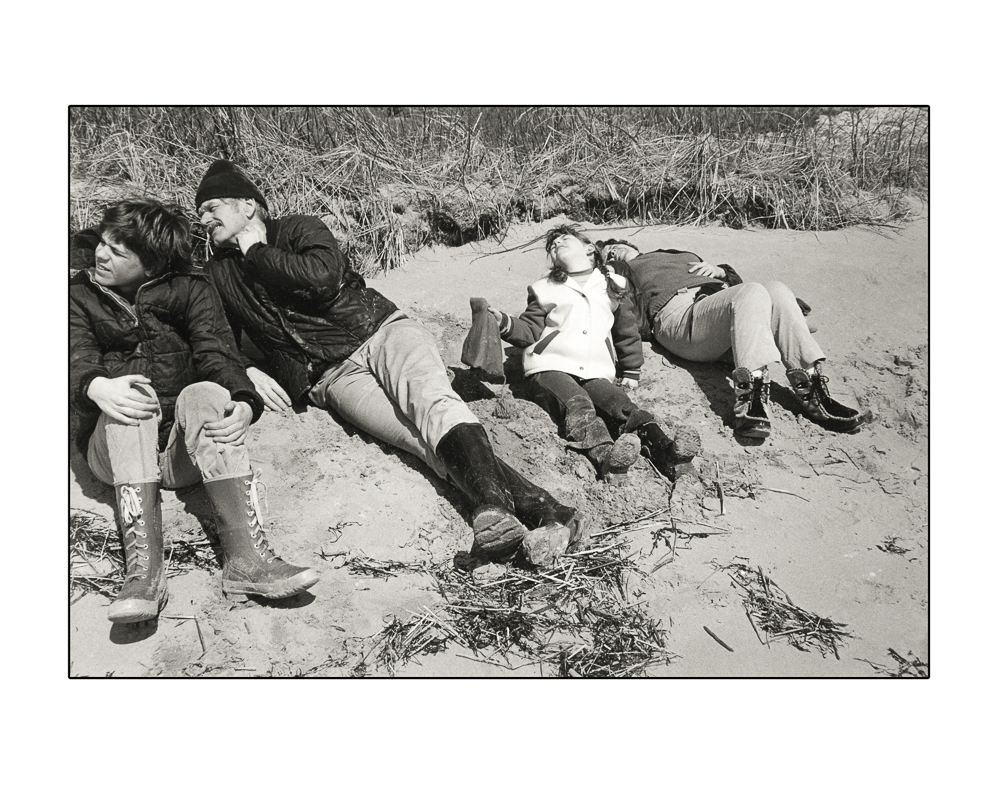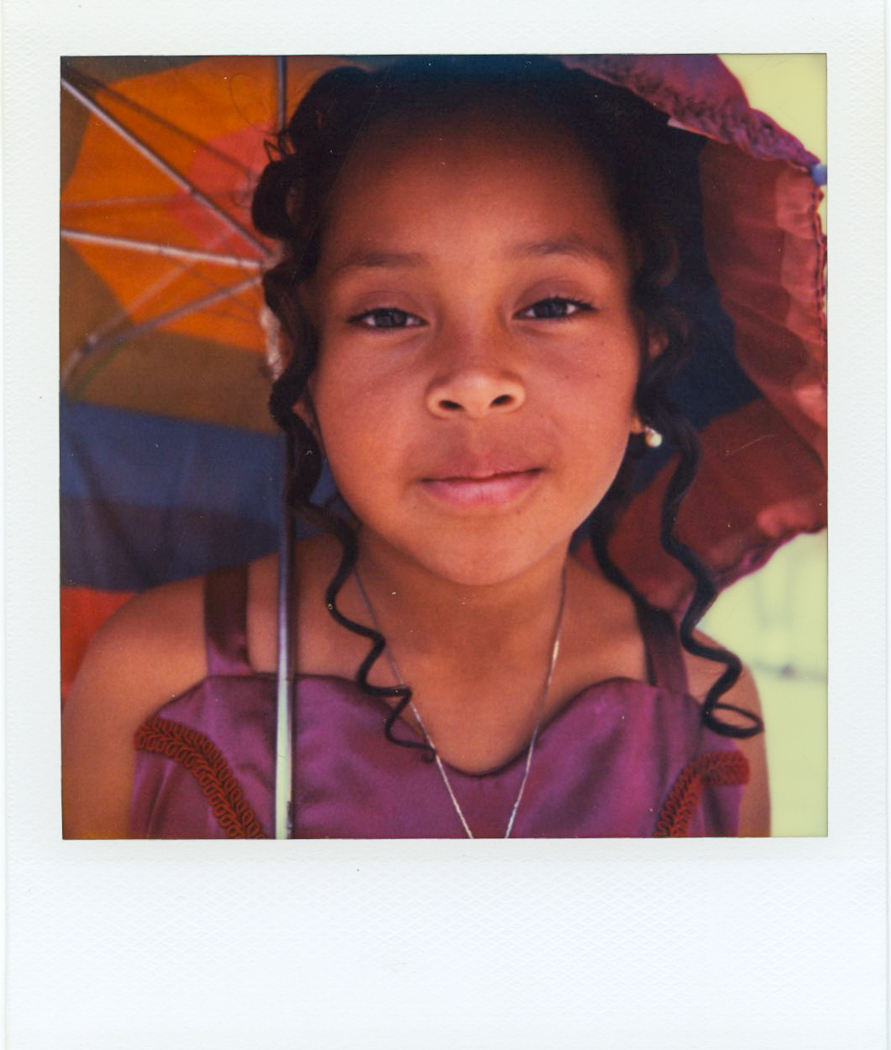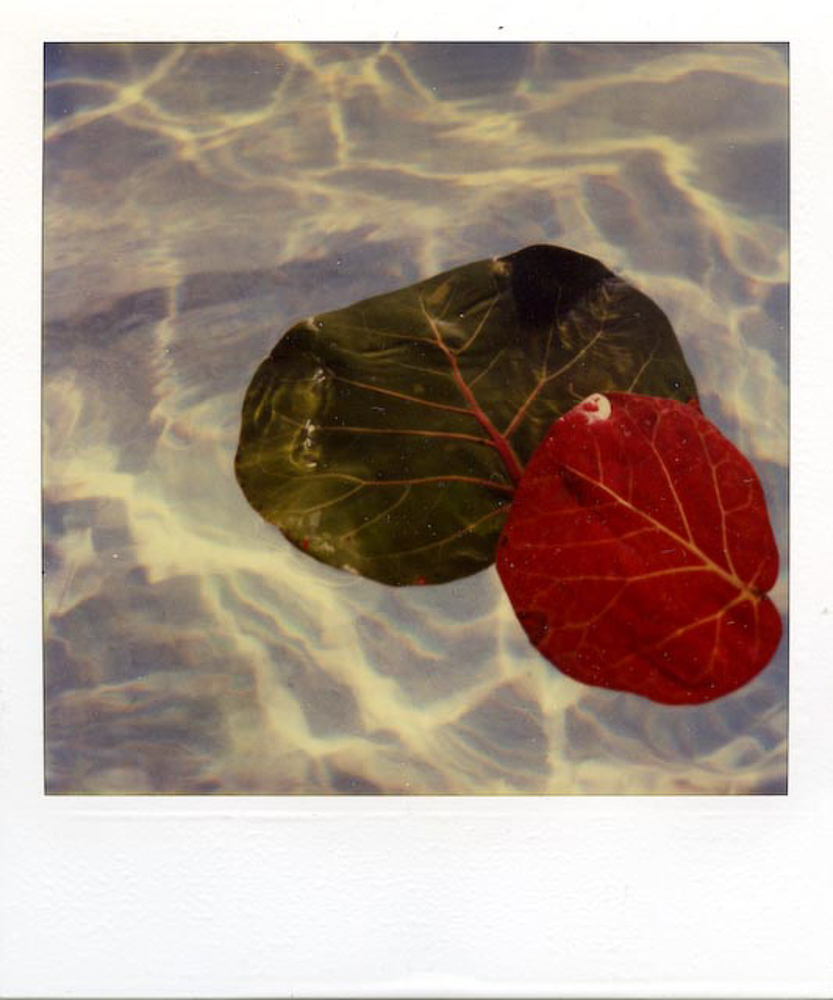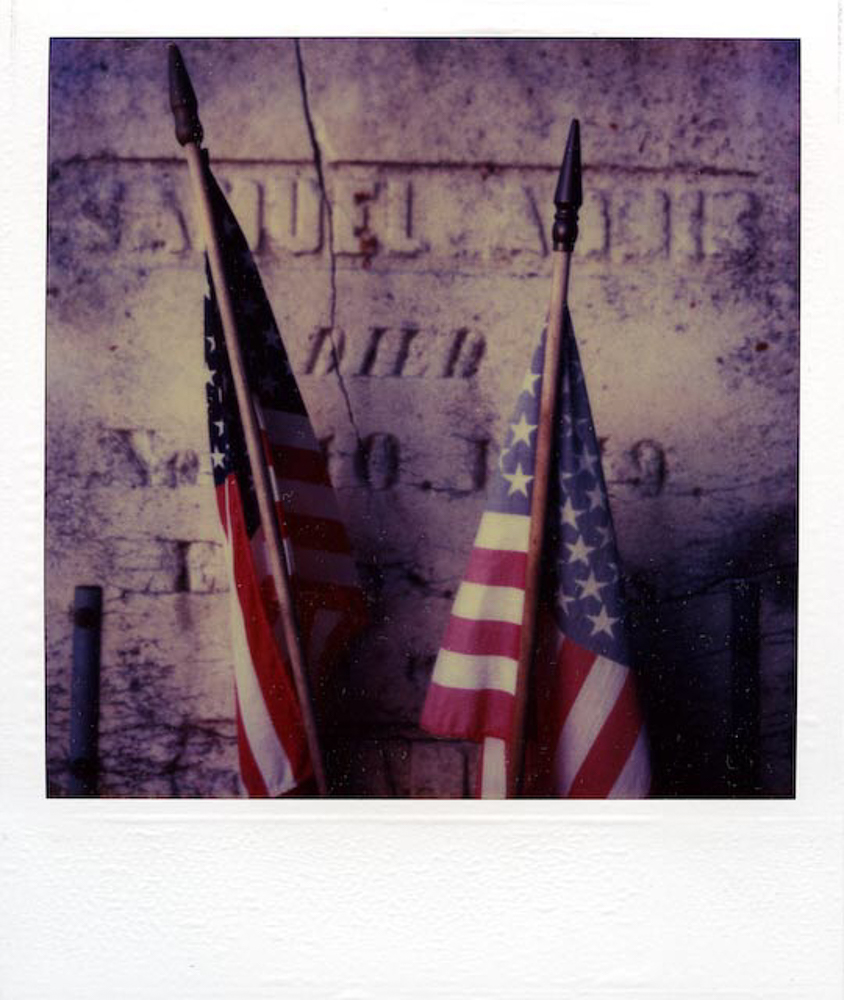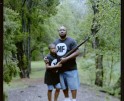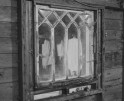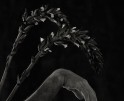Interview with Reid Callanan, Photographer and Educator
If you know the name Reid Callanan, perhaps it’s associated with the Santa Fe Photographic Workshops or the Maine Media Workshops. For his entire life, Reid has devoted himself to photographic education and for the past twenty eight years, Reid has been the founder and Director of the Santa Fe Photographic Workshops. Often times, we forget that the person behind the curtain, the person we consider a particular great and powerful Oz, is also a photographer, with a long history of image making. When I first met Reid, the word that came to mind was grace. He carries himself with elegance and intelligence, paying attention to details large and small and considering the well being and journey of all who surround him. He has an ability to really see people and to synthesize their best qualities quickly. I have often marveled, in hearing him speak about photographers, how straight to the heart of their person and vision his arrows land. He brings that same focused seeing to his own work and I’m happy to say that Reid has recently released a personal website, finally shining a light on his own legacy as a photographer. Today we explore the man behind the Santa Fe Photo Workshops and the man behind the camera.
Reid Callanan is a photographic artist and founder/director of Santa Fe Photographic Workshops, currently in its twenty-eighth year offering workshops to the international imaging community. In addition to campus programs in Santa Fe and San Miguel de Allende, the Workshops offers destination programs across the United States and to Cuba and Japan. As a dedicated educator, Reid understands the power of photography, especially in today’s visually centric culture.
In 1994 Reid founded the non-profit Santa Fe Center for Photography, now known as CENTER, and currently is President of its Board of Directors as a way to give exposure and support to photographer’s from all over the world. CENTER’s award programs have established the careers of countless photographic artists.
Reid serves on the President’s Council of the Texas Photographic Society. He is a member of Rotary Club of Santa Fe.
Tell us about your growing up and what brought you to photography?
For the first 10 years, I lived on a farm outside of Albany, New York with a large family of five (soon to be six) siblings. I was the oldest and named after my grandfather – the patriarch of the family – so I learned very early on that I was expected to do the right thing and lead by example. My brother Tom, one year younger, decided he didn’t want to be me, so he quickly became the rebel. It was an idyllic life with horses and barns and a pond and nearby caves.
That all changed when my parents decided to move the family to Baltimore. From a small-town, farm life in “the north” to living in a large “southern” city was quite an adjustment. Although it didn’t take long for me to fall in love with crab cakes, the Orioles and Colts, lacrosse and the Eastern Shore. I enjoyed Baltimore and flourished at a very progressive high school that my Dad just happened to be the head of (perhaps a harbinger of a career ahead for me). As the Head of School’s son, I needed to stay out of trouble so as to not embarrass him. Again, I kept my nose clean and was a class officer and captain of the lacrosse team. Tom was a magnet for good-natured trouble, controversy and pushed the envelope at every opportunity. I loved hearing about his nocturnal escapades when he snuck back into the house well past his curfew.
From “southern” Baltimore I returned to upstate New York for college at St. Lawrence University. The sciences attracted me and I majored in geology. After two years in the mostly sub-zero, tiny village of Canton, I needed a bit more big-city stimulation, so I spent my junior year at Richmond College in London. That year, 1974, proved to be the turning point in my young life. History, art, culture and travel eclipsed the rational pursuit of rocks for me. I went to the theater almost every night, studied in most of the city’s museums, explored the British Isles with school mates on weekends and took an eye-opening trip to the Soviet Union as the communist nation first opening to Western travelers in early 1970s. And most importantly, I took a photography class to learn how to use the Nikkormat my parents had given me for the trip to Europe. From the first days of this class, I went down the rabbit hole – from which I still have not emerged.
When did you start working at the Maine Media Workshops? What was your role there and were you making your own work?
In 1975 I returned to St. Lawrence for my senior year and completed my degree in Geology, although I spent most of my time in the department’s darkroom making prints from my junior-year abroad. I had the darkroom to myself, having been given the key to it by Mark Klett, who graduated a year ahead of me with a BS in Geology. Mark went from St. Lawrence to the Visual Studies Workshop in Rochester for his MFA and then onto a storied career as a fine-art photographer and Regents’ Professor of Art at Arizona State University. Mark and I are friends to this day.
After college I returned to Baltimore for a series of somewhat-related-to-photography jobs (camera store clerk and staff photographer for the Baltimore Claws expansion basketball team in the ABA). Uninspired, I decided to check out a new “school” I had heard about called the Maine Photographic Workshops (MPW). I visited Rockport, Maine and the school in April 1976 and liked what I saw. I returned in June to take a 2-week intermediate-level, black-and-while photography workshop taught by Craig Stevens. I loved the entire experience — so much so that I didn’t want to leave, so I stayed 14 years! Craig got me into the “Fellowship Program” (work/study) for the rest of the summer. Over the course of the next 7 weeks I got to be in workshops with Arnold Newman, Bill Allard, Ernst Haas, Eugene Richards, Mary Ellen Mark, Ralph Gibson and Charles Harbutt. What was a young, unattached man who was enamored with photography to do but stay?
At the end of that summer I was named the darkroom manager in trade for being able to be a student in the 6-month Residency Program. I built a solid foundation in photographic technique and seeing over the next several years as a student, and also as the darkroom and store managers in Rockport. It was a great experience for me.
What got you to Santa Fe and when did you start the Santa Fe Workshops?
January is a mostly desolate and frigid month in Maine, so in January of 1981 I decided to take a trip to the desert Southwest. Santa Fe was my destination as my brother Tom had recently moved there to work for Outward Bound. Upon arriving in Northern New Mexico I was stunned and mesmerized by the place. I had never experienced anything like it. I fell hard. The big sky and vast space, enveloping light, aroma of piñon logs burning, skeleton-laid-opened landscape, new-age culture, dusty roads, hot tubs at 10,000 Waves, acupuncture, margaritas at The Pink – it was unfamiliar and totally exhilarating for an East Coast guy. After ten days I departed with a vow to return as often as possible and eventually find a way to live in Santa Fe.
I did return most winters to visit my brother and Santa Fe to get more comfortable and rooted there. In 1985 I was named Managing Director at MPW and stayed in this position until 1989. In this role I was responsible for the running of the entire operation. It was an all-consuming job but one I loved. In 1989, after 14 years in Rockport, I decided it was time for a change and I needed to broaden my horizons to take on a new challenge. What I knew best and enjoyed the most was being around the creative spirit of the workshop environment, so this was my future.
In May of 1990 I drove across the country from Maine with my young family and several former MPW staffers to start Santa Fe Photographic Workshops in June. We were naïve and courageous at the same time. We knew how to run workshops but we knew little about Santa Fe and the desert Southwest. The adventure in Santa Fe began.
What have you learned about photography/photographers in your years at SFPW?
There isn’t enough time or space here to take a stab at this question. All that I know about photography and photographers has come to me from my years in Maine and Santa Fe. I feel as though I have lived a unique life because for more than 40 years I have been surrounded by extraordinarily talented photographers on a daily basis. For my entire adult life many of the world’s most accomplished photographers have come to my doorstep. Who else can say that? As a young adult in Maine I met, studied with and broke bread with photographers such as Eliot Porter, Paul Caponigro, Sally Mann, Duane Michals, Art Kane, Ruth Bernhard, Michael O’Neill, George Tice, Jean Pagliuso, Pete Turner and then as an older man in Santa Fe I became friends with many contemporary masters including Joyce Tenneson, Arthur Meyerson, Keith Carter, Nadav Kander, David Alan Harvey, Sheila Metzner, Dan Winters, Jodi Cobb, Joe McNally, Nevada Wier, Albert Watson, Greg Heisler, Platon, Maggie Taylor, Jay Maisel, Greg Gorman, Elizabeth Opalenik, and Sam Abell to name a few. I learned so much from these photographers as well as from our workshop staffers and participants. I have lived a photographic life without making my living as a photographer.
To partly answer your question, Aline. I can distill down to one simple truth what I have learned about photography – I have learned the difference between looking and seeing and I know how to record this with a camera.
At what point did you start CENTER?
After we started the Workshops in 1990 and had a few years to develop and expand the business, it became apparent there were important projects better suited for a non-profit endeavor. Providing opportunities for photographers to showcase their long-term personal projects, to award scholarships and grants, to build a membership organization whose mission was to encourage and support their photographic pursuits was not possible with the for-profit structure of Santa Fe Photographic Workshops. In 1994, I started a 501c3 organization called Santa Fe Center for Visual Arts to clear a path to someday serve this worthy role. Over the next 20+ years people of vision including Sam Abell, Nancy Foley, Marty Swanson, Joanna Hurley, Gay Block, Maggie Blanchard and Laura Pressley helped shape SFCVA into the vital organization that today exists as CENTER.
I’m excited that you now have your own website, have started teaching, and are getting your work out into the world! Tell us about your workshop…
I teach this workshop, Cameras Don’t Take Pictures, once a year in San Miguel de Allende. It focuses on where pictures come from — if you agree that cameras on their own don’t take pictures. The most important aspect of this realization is that people don’t create memorable and insightful photographs with cameras, they do so with their imaginations, sense of curiosity, and their hearts. In my workshop, we make the leap from taking pictures to making and creating images that express the way we view the world and feel about our lives. We explore ways of using our cameras to discover the outside world and expand our creative eye.
I think San Miguel de Allende is a perfect place to embark on a personal adventure of photographic discovery because it offers a vibrant cultural environment with more than enough magic and spirit to be a truly inspirational muse. In the classroom, we investigate the foundations of making strong photographs. Light and moment are the essential elements of well-seen images. We learn to see the many nuances of light and then develop the ability to capture the illusive, decisive moments that highlight our days as still photographers. In addition, we explore the graphic building blocks of successful composition, paying particular attention to foreground/background, framing, layering, and perspective.
I share images daily from photographers who have changed the face of the medium and hopefully will serve as inspiration for images this week. I also use one of my favorite books, The Way of the Traveler: Making Every Trip a Journey of Self-Discovery by Joseph Dispenza, as a guidebook for the week’s personal journey.
My goal for this week is for each participant to develop a broad base of knowledge, understanding, and appreciation for the power of the photographic medium while developing the ability to produce strong personal images imbued with meaning, grace, and clarity.
What subjects are you drawn to as a photographer?
My first experience with photography in 1974 was living in London and then visiting new places throughout Europe on weekends and during holiday. I used the camera to document the places and people along the journey. I was taking pictures of what things looked like to me. My second significant experience with photography happened a few years later doing an assignment for Craig Stevens at MPW documenting my home and garden. This assignment turned into a 5-year personal project that became my Homescapes series. I learned from these photographs how to make images of how I felt about places and people and events. I discovered the joy of making photographs on a daily basis with the subject matter being the world closely held around me. This is what draws my attention as a photographer – the beauty and wonder and mystery of the world within my ear shot and eye view. Photography is a daily practice whether I am at home, at work or traveling. I now use Instagram as a vehicle for sharing this daily practice. It keeps me sharp photographically and seeing things more clearly.
What equipment do you use? Ever have the desire to return to film?
I keep my gear as simple as possible and know how to use it as well as possible so it does not get in my way of creating images. For me the camera is a responding tool, and I need to be as fluid and at ease with its use as possible. I have gotten to the point where using my camera (be it a DSLR, a Mirrorless, a Polaroid or a Smart Phone) is intuitive and I don’t have to think about it. It’s like driving a car – it’s second nature. It doesn’t matter how much equipment I have, it matters that I have mastered the use of what I do have. One camera, one lens and I’m good to go.
I believe I am fortunate to have learned photography in the film era. It gave me a solid foundation in the important technical aspects of the medium. I spent years and years fine-tuning my craft in Maine. I mastered camera handling and exposure and film developing and b/w printing. I managed the student darkrooms at MPW for six years and spent 8 to 10 hours a day in that facility and then went home and worked in my own darkroom until the wee hours in the morning. I even had a TV covered with a red filter set up in my darkroom to help while away the long nights “shaking pans” (as Sam Abell calls processing prints).
But today, we are obviously in a complexly new era of photography, technically speaking; and I embrace this digital world with both arms. I am happy to work in Lightroom and not in the darkroom. So, I don’t look back and long for the film days. They were important and wonderful years for me. I loved making images on Tri-X film developed in FG-7 and printed on Portriga Rapid paper using Sprint QUICK SILVER developer and then selenium toned, but I have moved on to use today’s tools to help me create images.
You do a lot of portraiture on your travels–you are obviously comfortable working with strangers…can you tell us about your process?
The most intriguing aspects of traveling for me are the people who live in these places. It’s the people who define a country or a city or a village for me, not so much the architecture or the landscape or the customs. I am always drawn to the local inhabitants. So it makes sense I would want to make images of them when I travel. I want to put them in front of my camera and let them tell me something about themselves. To allow this to happen, I have to gain their trust in a very short period of time. I do this by making direct eye contact, seeing them with respect and kindness, smile, hold my camera up and ask their permission with my eyes. In that instant I have their acceptance and permission, or I don’t. If I don’t — I move on. If I do — I make time to create a portrait, and this process takes time. I never get an insightful portrait by taking one frame and moving on — never.
The way I work on the streets for making portraits in Cuba or Mexico is to pare down my equipment to one small camera with a 28mm lens. I don’t have any other gear that would make these people think I am a pro photographer (which would raise their concern about the purpose of my presence). I don’t have a camera bag, but use a small backpack to carry backup cards and batteries, water and small gifts. I find a neutral background to work with them and try to move their family and friends away so as not to be a distraction. Then I move in close to them (I have a 28mm, remember) making as many exposures as I need for them to stop their “smile for the camera” routine and also until they “loosen up” in front of my camera. I never hold the camera to my eye and look through the viewfinder as it cuts off my eye connection with them and puts a machine between them and me. I have worked with my gear long enough to know what I will record without looking through the viewfinder (and it’s a 28mm, remember). If I need some framing help I glance at the display screen. I hold my camera chest high, so I don’t block my face. If I find their looking to intently into my eyes, I will ask them to look into the camera lens (“ojos aquí”). With enough time and patience and trust they will reveal something to me, a vulnerability or a truth, if I am lucky enough.
If this portrait experience was warm and respectful and I took a good amount of their time, I will offer a small gift (not money or candy, but something useful like a deck of cards or a bag of marbles for the children). If possible, I will get their name and address so I can return with a print on my next visit. Returning with a well-made print is the best gift of all and also an entrée for me to move deeper into their lives and the lives of their extended family and neighbors. There is nothing as powerful and joyful as delivering a beautiful and flattering print to one of my portrait subjects the next year. When their family and friends see this, they want the same for themselves, so they line up to reveal themselves to me and my camera, and this wonderful cycle continues.
What’s in the future–in your own work and at the SFPWs?
I feel that my personal photography is now taking on a level of importance that hasn’t been evident in many years. In 1985, I took on business management roles at Maine and then in Santa Fe that dominated my energy and all the hours in a day. I am not quite sure why, but once again my personal photography is rising up and taking on more significance and leading me on new creative adventures. New technologies (at least to me) have provided an exciting way for me to easily share my images. A website and Instagram are wonderful additions and outlets for my creative life in photography. And teaching is also taking on added importance, as I want to share what I have received from so many other photographers over the past 40 years.
As far as the Santa Fe Workshops goes, we are constantly reinventing ourselves with new programs in Santa Fe and new destinations to discover and explore with our cameras. We will continue to evolve and push into new territory. For many years I would develop all our programming, but recently decided to make this process more of a team effort. We now have a Program Committee that provides fresh ideas for new workshops and instructors for us to consider.
Our Santa Fe Writers Lab is a new direction that we are excited about. Bringing writers to our lovely campus in Santa Fe or to the convent in Old Havana are part of our new endeavors.
In this day and age it’s challenging to plan more than a year or two out because things change so quickly. Right now we are focused on offering interesting programming for 2018 and 2019 — beyond that is anyone’s guess.
And finally describe your perfect day!
I can’t do this because I have so many scenarios for the perfect day.
I love going to work and being around our amazingly talented and dedicated team at the Workshops as well as our participants in their creative workshop process here in on campus.
I love staying at home with my wife and puttering around doing odd jobs, working in the garden, and then going to the Violet Crown to see a movie.
I love traveling to Maine or Pittsburgh and spending the day visiting with family and friends.
I love returning to Mexico and Cuba and spending the day experiencing life on the streets in these rich cultures.
I love being a sports fan and spending the day watching TV and cheering on my favorite teams – the Patriots, the Penguins, and the Orioles.
I love being a photographer and spending the day seeing the world through this filter and lens.
Thanks for asking Aline.
For more information on the Santa Fe Photo Workshops, or Reid’s workshop, Cameras Don’t Take Pictures, go here.
Posts on Lenscratch may not be reproduced without the permission of the Lenscratch staff and the photographer.
Recommended
-
One Year Later: Christian K. LeeJuly 20th, 2024
-
One Year Later: Nykelle DeVivoJuly 19th, 2024
-
Interview with Kate Greene: Photographing What Is UnseenFebruary 20th, 2024
-
Semana Mexicana: Felipe “Chito” TenorioFebruary 5th, 2024

